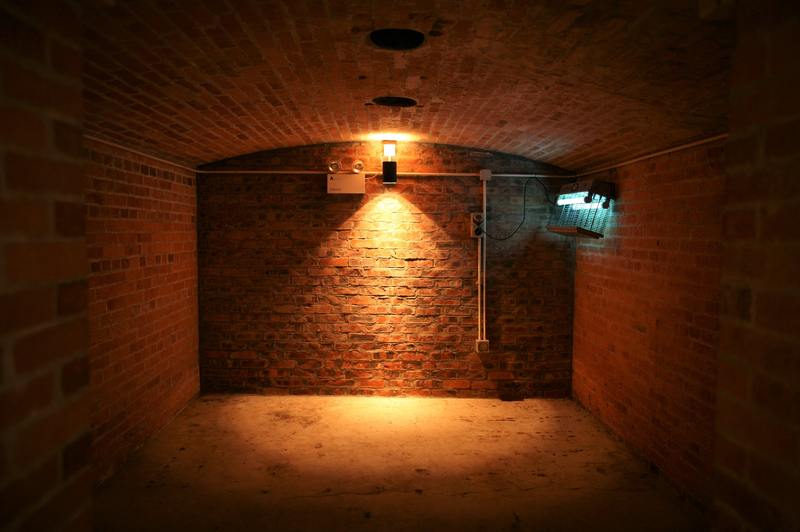Water damage can be everywhere, so it is crucial to know how to repair water damaged shifted basement wall. When you leave a damaged basement wall unrepaired, it causes worse situations that we all hate to encounter. If you currently have conflicts in your water damaged shifted basement wall, continue reading this!

How Does Water Ruin Shifted Basement Walls?
Water can come in various ways to ruin different things, such as ceilings, furniture, or walls. It can be through a flood, leak from a burst pipe, or a seep from cracks in a wall. Once it starts damaging your property, it will cause further problems, like termites, molds, and bacteria.
Another thing that ruins a basement wall is hydrostatic pressure. It comes from the weight in the soil surrounding the foundation due to the water it absorbs. It makes the soil expand, causing shifting and collapsing of the wall.
How Can You Repair A Water Damaged Shifted Basement Wall?
Shifting of a basement wall due to water damages can be in the form of cracks, bowing, and sinking. The good thing is there are four methods you can choose from when repairing this problem. However, it still depends on the severity of the damage.
Before starting the repair, you must ensure that the basement wall is entirely dry. If it has molds and dirt, it is also best to clean it beforehand. Fixing a dirty basement wall can affect your health, so ensure cleanliness first.
Method #1. Fixing wall cracks
Patching is the most suitable method for fixing wall cracks that can cause water damages.
Step #1. Use a chisel to enlarge the crack at least twice as the original size.
Step #2. Remove dirt and debris by using brush and water.
Step #3. Let it dry.
Step #4. Mix a patching compound and grab an amount to fill the cracks entirely.
Step #5. Scrape the surface to remove excess mixture.
Step #6. Use plastic sheeting or duct tape to seal the wall.
Step #7. Carefully open the top and use a spray bottle to add water.
Step #8. Repeat the same process every 24 hours for five days to cure the patches properly.
Method #2. Repairing bowed basement walls
Using wall anchors is an inexpensive method of repairing bowed basement walls.
Step #1. Dig a narrow trench around your home’s perimeter.
Step #2. Lower down earth anchor plates in the trench.
Step #3. Drill small holes outward through the foundation and embed steel connecting rods to the anchors through the holes.
Step #4. After that, tighten the assembly and refill the trench.
Method #3. Slabjacking
When water damage becomes worse, it can lead to the foundations of the wall sinking. Slabjacking is a suitable method for fixing sunken concrete without replacing the slab.
Step #1. Drill 1.5-2 inches holes in the affected slab.
Step #2. Ensure to evenly space the slabs for at least 3-8 feet apart.
Step #3. Mix water, sand, and cement, and pump them into the holes.
Step #4. Start with the lowest points and pump until the sunken part matches the original height.
Step #5. Remove excess mixture and smoothen the surface.
Method #4. Using piers
Piering is the best when repairing more enormous problems. It is more expensive, but it ensures a more stable repair.
Step #1. Excavate a three by four feet space ten feet below the ground.
Step #2. Remove any dirt and ensure that the brackets will fit perfectly in the space.
Step #3. Install the pier on the brackets.
Step #4. Test the pier if it can carry pressures before attaching the metal head assembly.
Step #5. Use a hydraulic jack in raising the foundation to its original level.
Step #6. Fasten the pier to the wall brackets.
How Can You Stop The Water Damage?
Stopping the water damage can be the way to avoid costly repairs. To help you with that, here are some tips!
- Make a drainage – Drainages can help to provide a path where the rainwater will flow. It is better to use dense soil, such as clays, to prevent it from absorbing the water that causes shifting.
- Repair wall and ceiling cracks immediately – If you already noticed a water leak, do not wait for it to become worse. Repair it as soon as possible.
- Fix plumbing issues – Leakage from pipes can affect the soil that supports the foundation. You need to fix any plumbing issues to avoid shifting.
How Much Will It Cost To Repair?
The expenses of repairing a shifted basement wall depend on the method you used to fix it. Wall cracks can cost you $250 to $800 per crack, while leaks can range from $2500 to $5000. On the other hand, sinking or settling can be $1300 to $1500 per pier, and bowed basement walls are $5000 to $15000.
It is pretty costly, but you can save up some money if you have insurance from an insurance company. However, you must ask about their insurance coverage first because they usually cover water damages from insured events, such as floods, storms, and failed pipes only.
Conclusion
Knowing how to repair water damaged shifted basement wall can help avoid dangerous situations that may arise. Since you have read this article, you may now fix your problem and feel secure with your basement wall!
